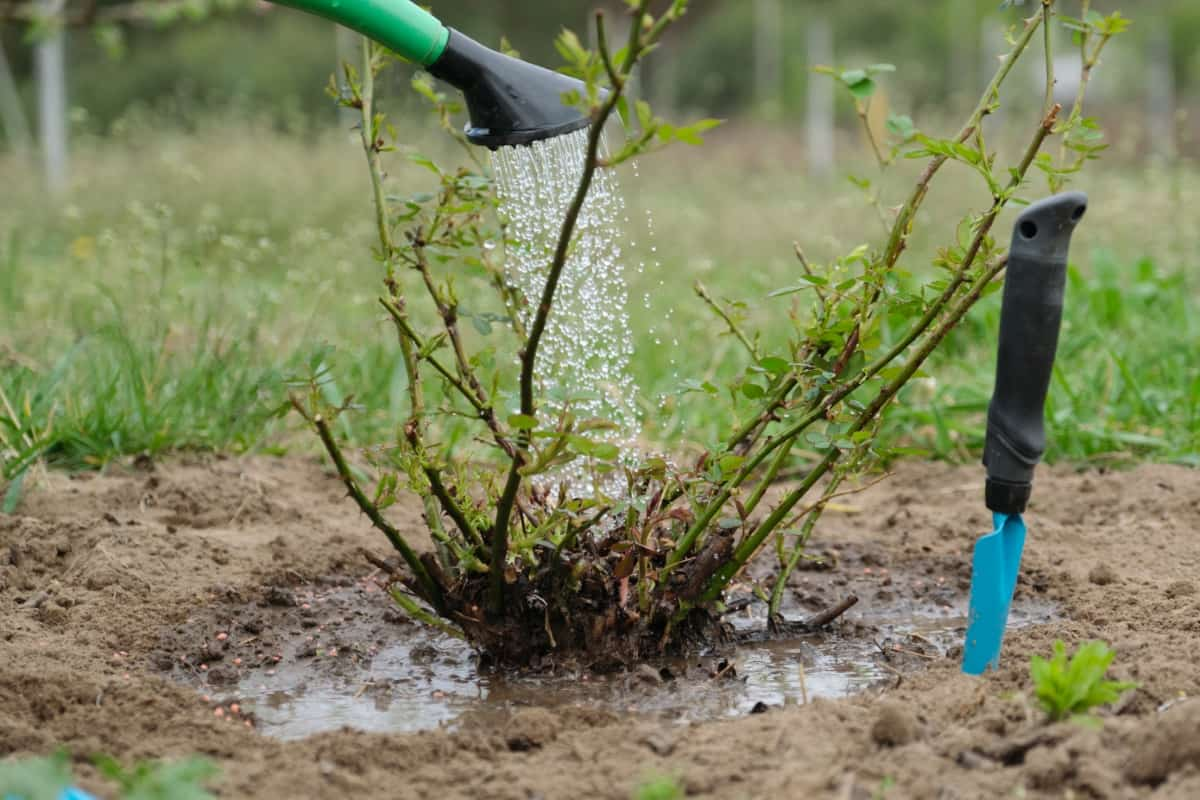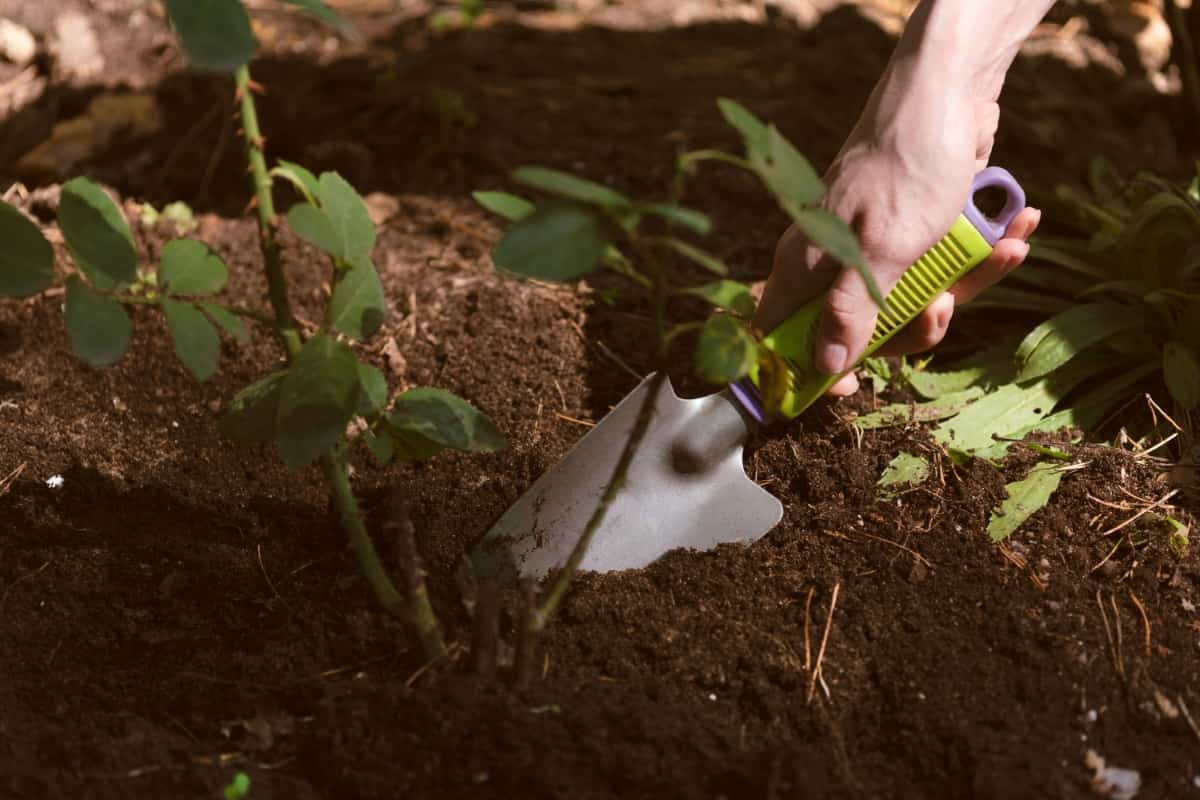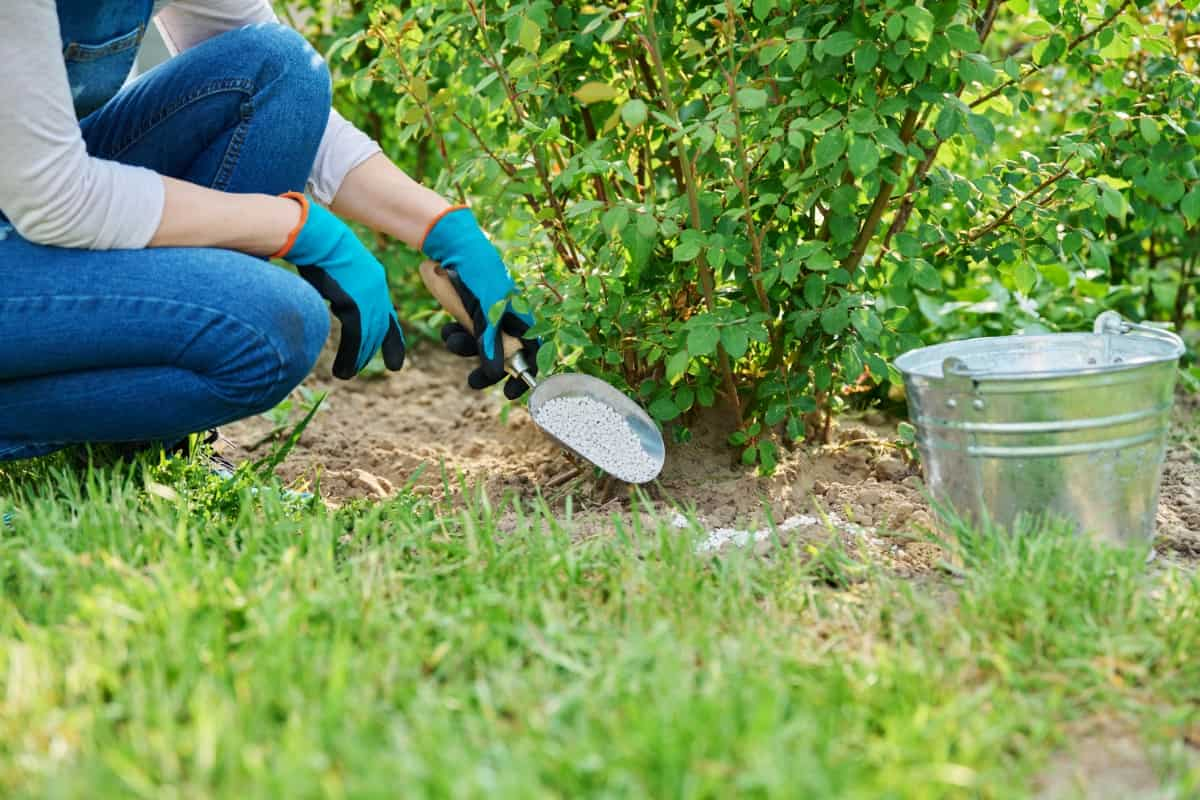Knowing the best time and techniques for transplanting Roses is crucial, whether due to changing garden layouts, moving homes, or simply wanting to give them a fresh start in a new spot. Transplanting Rose bushes can be a rewarding but delicate process. By choosing the right time of year and following the proper techniques, you can successfully relocate your Roses to a new spot in your garden.

How to Transplant Rose Bushes
Best Time to Transplant Rose Bushes
Choosing the best time ensures a successful and healthy relocation for your beloved Roses. Ideally, the best month to transplant a Rose bush is during its dormant season in late winter or early spring. This period allows the plant to establish new roots before growing again in warmer weather. Summer is a vibrant and lively season, but it can also present challenges for transplanting Rose bushes in summer.
However, with the right techniques and precautions, you can relocate your beloved Roses without harming them. Can you transplant rose bushes in the fall? Transplanting Rose bushes can be a delicate process, requiring careful consideration of timing and conditions. One common question is whether it’s possible to transplant Rose bushes in the fall. While some gardeners may have succeeded with fall transplantation, it’s generally not recommended.
Tips for Successful Rose Bush Transplantation
How to move a Rose bush without killing it? Moving a Rose bush without causing harm to it can be a delicate process, but with the right techniques, you can ensure its successful relocation. The best time is when the temperatures are mild, and the Rose bush is dormant. Before transplanting, prepare the new location by loosening the soil and adding organic matter.
This will provide a nutrient-rich environment for your transplanted Rose bush. Carefully dig around the root ball of your Rose bush, keeping as much soil intact as possible. Use a sharp spade or shovel to avoid damaging the roots. Once you have dug up your Rose bush, immediately transfer it to its new location and plant it at the same depth.
Ensure that there is enough space for its roots to spread out comfortably. After transplanting, give your Rose bush a good soak with water to help settle the soil and remove any air pockets around its roots. Continue watering regularly until it becomes established in its new spot. Apply organic mulch around your newly transplanted Rose bush to retain moisture, suppress weeds, and protect against extreme temperature fluctuations.
Preparing the Soil for Transplanting Rose Bushes
When transplanting Rose bushes, choosing the right location is crucial for their success and longevity. So, let’s find the best place to plant a Rose bush. First, remove any weeds or grass from where you plan to transplant your Rose bush. Weeds can compete with your Roses for nutrients and water, so it’s important to clear them before planting. Next, loosen up the soil using a garden fork or tiller.
In case you missed it: How to Treat Rose Rust Naturally: Causes and Fix with Effective Home Remedies

This will improve drainage and allow roots to penetrate easily into the ground. Be sure to work at least 12 inches deep, breaking up any clumps of soil as you go. Once the soil is loosened, amend it with organic matter. This will enrich the soil with nutrients and improve its structure. Mix about 2-3 inches of organic matter into the top layer of soil. Before planting your Rose bush, ensure your soil’s pH level is suitable for Roses. Most varieties prefer slightly acidic soils with a pH range between 6 and 6.5.
Choosing the Right Location for Transplanted Rose Bushes
You’ll choose a spot with at least six hours of direct sunlight daily. Roses thrive in sunny locations, so finding an area with ample sunlight is essential. Next, pay attention to the soil conditions. Before transplanting, ensure the soil has good drainage and amend it with compost or other organic material if necessary. In addition to sunlight and soil quality, consider the surroundings of your chosen location.
Watering and Fertilizing Newly Transplanted Rose Bushes
After transplanting, the roots of the Rose bush need to establish themselves in the soil, and proper watering plays a crucial role in this process. When it comes to watering newly transplanted Rose bushes, consistency is key. The goal is to keep the soil moist but not waterlogged. Water deeply at least once weekly, ensuring the water reaches the root zone. Avoid frequent shallow watering as it promotes shallow root development.
In addition to regular watering, providing fertilizer can give your transplanted Rose bushes a much-needed nutrient boost. Choose a balanced slow-release fertilizer specifically formulated for Roses. Apply it according to package instructions, typically in early spring or after transplanting. Follow dosage recommendations carefully to prevent over-fertilization and potential damage to your Roses. Remember that every garden’s conditions are unique, so monitor your plants closely and adjust your watering and fertilizing practices accordingly.
Pruning Techniques for Transplanted Rose Bushes
Pruning helps promote healthy growth and encourages the development of strong branches. Before you start pruning, remove any dead or damaged wood. Additionally, removing any crossed or rubbing branches will prevent them from causing damage in the future. Next, consider the shape and size you want your Rose bush to have.
To achieve an open and airy look, prune back one-third of the overall height by cutting just above an outward-facing bud eye. This will encourage outward growth and increase air circulation within the plant. To maintain a compact form, prune back about half of the previous year’s growth. Be sure to cut at a 45-degree angle just above a bud facing away from the bush’s center.
Protecting Transplanted Rose Bushes From Pests and Diseases
One of the key challenges when transplanting Rose bushes is protecting them from pests and diseases. These delicate plants can become vulnerable during transplantation, making them more susceptible to insect attacks and infections. Inspecting your Rose bush carefully before digging it up for transplantation is essential.
In case you missed it: How to Treat Rose Leaf Curl Naturally: Causes, Fix with Effective Home Remedies

Look for any signs of pests or diseases, such as aphids, spider mites, powdery mildew, or black spot. If you notice any issues, treat them accordingly before moving the plant. Once you have transplanted your Rose bush into its new location, monitor it regularly for any signs of trouble. Inspect the leaves, stems, and flowers for discoloration or unusual growth patterns that could indicate an infestation or infection.
Consider using organic pest control methods to deter pests like aphids or thrips from attacking your newly transplanted Roses. These products are effective against common garden pests and safe for humans and beneficial insects. In terms of disease prevention, good sanitation practices are crucial. Remove fallen leaves and debris around your Rose bushes regularly to prevent the spread of fungal pathogens like black spot or powdery mildew.
Avoiding Transplant Shock With Rose Bushes
Transplanting Rose bushes can be a delicate process, and one of the challenges you may encounter is transplant shock. This occurs when the Roses experience stress from being uprooted and moved to a new location. Understanding how to prevent or minimize this shock is important so that your transplanted Roses can thrive.
One way to help alleviate transplant shock is by preparing the new planting hole before removing the Rose bush from its current location. The new hole should be deep enough for the roots to spread comfortably and wide enough for them to have room to grow. Transplanting Rose bushes can be a stressful experience for these delicate plants. They may be shocked when uprooted from their original location and placed in a new one.
Make sure to water the Rose bush thoroughly before transplanting it. When digging up the Rose bush, be careful not to damage its roots. Use a sharp spade or shovel to gently dig around the base of the plant, maintaining as much of the root ball as possible. Preparing its new planting hole beforehand is important once you have successfully dug up the Rose bush. Before placing the Rose bush into its new hole, add some organic matter, such as compost or aged manure, into the soil.
Common Mistakes to Avoid When Transplanting Rose Bushes
Transplanting Rose bushes can be a delicate process, and avoiding common mistakes is crucial for their successful relocation. One common mistake is not planning. Before you dig up your Rose bush, take the time to prepare the new location properly. This includes ensuring the soil is well-draining and enriched with compost or organic matter.
Another mistake many gardeners make is not digging a large enough hole for the transplanted Rose bush. Roses have an extensive root system, so it is important to provide ample space to grow and establish themselves in their new home. Improper handling during transplantation can also spell disaster for your Roses.
In case you missed it: How to Grow and Care for Desert Rose Bonsai: Planting, Pruning, and Repotting

Avoid rough handling or disturbing the roots too much, as this can lead to shock or damage that may affect their growth. Failing to water adequately after transplanting is another mistake that should be avoided. Newly transplanted Roses need regular watering until they become established in their new spot. Additionally, pruning at the wrong time or too heavily can hinder regrowth and flowering.
Conclusion
Transplanting Rose bushes requires careful planning and execution. By following the step-by-step instructions, choosing the right time, preparing the soil, selecting an appropriate location, watering and fertilizing properly, pruning effectively, protecting against pests and diseases, and avoiding common mistakes, you can successfully transplant your beloved Roses. Give your Rose bushes time to adjust to their new home and recover from any potential shock. With proper care, they will thrive in their new environment.
- Feed Your Flock for Less: Top 10 Tips to Save on Chicken Feed
- Ultimate Guide to Ossabaw Island Hog: Breeding, Raising, Diet, and Care
- Hatching Answers: The Top 10 Reasons Your Chickens Aren’t Laying Eggs
- Eggs and Economics: Breaking Down the Cost of Raising Backyard Chickens
- Defend Your Greens: Proven Methods to Keep Iguanas Out of Your Garden
- Ultimate Guide to Cinnamon Queen Chicken: A Comprehensive Guide for Beginners
- Ultimate Guide to California Tan Chicken: Breeding, Raising, Diet, Egg-Production and Care
- Ultimate Guide to Marsh Daisy Chicken: Breeding, Raising, Diet, and Care
- 10 Types of Chicken Farming Businesses You Can Start for Profits